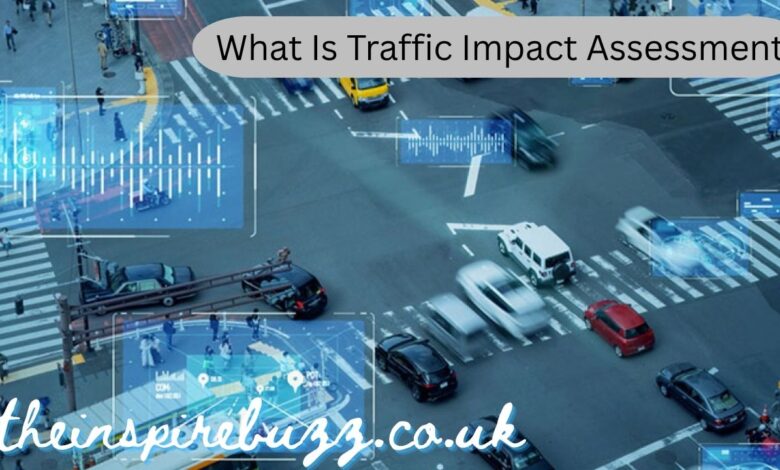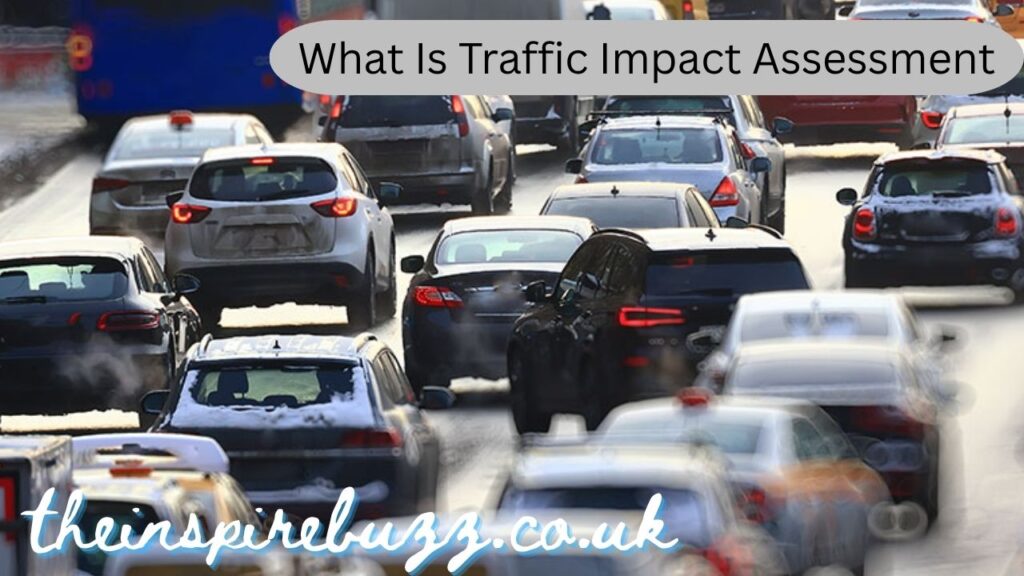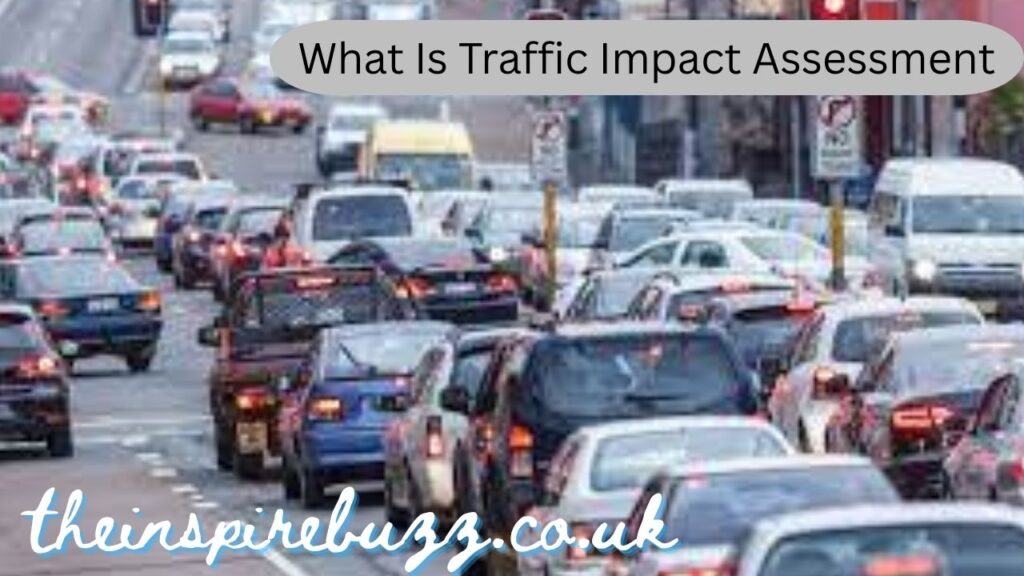What Is Traffic Impact Assessment – Meaning, Method, Process, and Importance Explained

Introduction – Understanding What Is Traffic Impact Assessment
If you’ve ever wondered what is traffic impact assessment, it refers to a detailed study conducted to understand how a new development project—such as a residential area, shopping complex, or industrial park—will affect the surrounding road network and transportation systems.
A Traffic Impact Assessment (TIA) helps planners, engineers, and local authorities make informed decisions about how to manage vehicle flow, road safety, and infrastructure needs. By predicting future traffic conditions, TIAs ensure that developments don’t cause congestion or compromise public safety.
Definition of Traffic Impact Assessment
In simple terms, a Traffic Impact Assessment is a systematic evaluation of the potential effects that a proposed development will have on the existing and future traffic environment.
It involves analyzing data related to vehicle movement, pedestrian safety, parking demand, and road capacity. The main goal is to identify whether road networks can handle the additional traffic and what improvements might be needed to support it.

Why Traffic Impact Assessment Is Important
The importance of understanding what is traffic impact assessment lies in its role in sustainable urban development. Without proper evaluation, new projects could overwhelm road systems, causing congestion, pollution, and accidents.
By conducting a TIA before construction begins, planners can proactively implement solutions—such as road widening, improved intersections, or public transport access—that prevent future problems and ensure community safety.
Objectives of Traffic Impact Assessment
The primary objectives of a Traffic Impact Assessment are to:
- Evaluate how a proposed development will affect traffic flow.
- Determine if the surrounding roads can accommodate additional vehicles.
- Recommend improvements to ensure smooth transportation.
Ultimately, the assessment helps balance economic growth with sustainable transport systems. It supports local governments in approving development projects responsibly and helps developers plan infrastructure that aligns with public needs.
When Is a Traffic Impact Assessment Required?
A TIA is usually required when a proposed project is expected to generate significant amounts of new traffic or alter existing patterns.
For instance, large-scale projects like shopping centers, hospitals, schools, industrial estates, or new housing developments often require this assessment. Local authorities may also mandate a TIA if the project is near major roads, intersections, or public transport hubs.
Who Conducts a Traffic Impact Assessment?
A Traffic Impact Assessment is typically carried out by qualified transportation planners or civil engineers specializing in traffic analysis. These professionals use advanced modeling software and on-site data collection techniques to forecast future traffic conditions.
They collaborate with urban planners, environmental consultants, and government agencies to ensure that the findings align with regional transportation goals and land-use policies.
Key Components of a Traffic Impact Assessment
Understanding what is traffic impact assessment involves knowing its major components. A typical TIA report includes:
- Existing Traffic Conditions: Current road capacities, vehicle counts, and flow rates.
- Trip Generation: Estimation of how many new trips the development will generate.
- Trip Distribution and Assignment: Analysis of how those trips will spread across the road network.
- Impact Analysis: Evaluation of delays, queue lengths, and congestion levels.
- Mitigation Measures: Recommendations to improve traffic flow or infrastructure.
Each component plays a crucial role in ensuring that developments are compatible with existing transportation systems.
Steps Involved in Conducting a Traffic Impact Assessment
The process of conducting a Traffic Impact Assessment generally follows a structured methodology:
- Scoping: Identifying the study area and objectives.
- Data Collection: Gathering information about current traffic volumes, road geometry, and public transport.
- Analysis: Using simulation models to predict how the new development will affect traffic.
- Recommendations: Suggesting improvements or mitigation measures to address negative impacts.
This step-by-step approach ensures accuracy, transparency, and compliance with local regulations.
Data Collection in Traffic Impact Assessment
Data collection is one of the most critical steps in TIA. Engineers gather information such as vehicle counts, turning movements, speed data, pedestrian crossings, and accident history.
Modern TIAs often use technologies like Automatic Traffic Counters (ATCs), GPS tracking, and drone surveys for real-time accuracy. The quality of this data determines the reliability of the entire assessment.
Traffic Modeling and Analysis
Once data is collected, experts use traffic modeling software like SIDRA, VISSIM, or SYNCHRO to simulate future conditions. These tools help predict congestion levels, vehicle delays, and queue lengths during peak hours.
Through modeling, planners can visualize how a proposed development might influence traffic behavior over time. This analysis forms the foundation for recommending effective mitigation strategies.
Common Issues Identified by Traffic Impact Assessment
A comprehensive Traffic Impact Assessment often reveals potential challenges that need to be addressed before a project moves forward. These may include:
- Overloaded intersections and bottlenecks
- Insufficient parking facilities
- Increased pedestrian safety risks
- Reduced travel speeds during peak hours
Identifying these issues early allows planners to take preventive measures, saving time and resources in the long term.
Recommended Mitigation Measures
The purpose of a TIA isn’t just to identify problems—it’s to propose practical solutions. Some common mitigation strategies include:
- Adding new lanes or roundabouts
- Installing traffic signals or pedestrian crossings
- Improving public transport connectivity
- Implementing parking management systems
By incorporating these improvements, developers can ensure smoother traffic flow and safer environments for all road users.
Environmental and Social Considerations
A thorough TIA also examines environmental and social impacts. Increased traffic may lead to higher emissions, noise pollution, or reduced air quality.
From a social perspective, the report assesses how the development will affect nearby residents, pedestrians, and cyclists. This holistic approach ensures that development decisions are sustainable, equitable, and environmentally responsible.
Benefits of Conducting a Traffic Impact Assessment
The benefits of conducting a Traffic Impact Assessment are significant for all stakeholders:
- For Developers: Avoid costly redesigns or legal disputes by planning ahead.
- For Governments: Ensure infrastructure aligns with urban growth.
- For Communities: Maintain safety, accessibility, and quality of life.

In short, TIAs promote smarter urban development and protect public interests while enabling responsible investment.
Challenges in Conducting Traffic Impact Assessments
While TIAs are essential, they also come with challenges. Data collection can be time-consuming, and predicting human behavior in traffic models isn’t always perfect.
Moreover, external factors such as seasonal variations, economic changes, or new transportation technologies can affect long-term accuracy. Despite these limitations, continuous improvement in data analytics and AI modeling is making modern TIAs more reliable than ever.
Future of Traffic Impact Assessment
The future of TIAs lies in smart technology and data integration. With the rise of Artificial Intelligence (AI), Internet of Things (IoT), and real-time traffic analytics, traffic assessments will become more dynamic and predictive.
Cities are adopting smart mobility systems that monitor and adjust traffic flow in real-time. As urban areas expand, the role of traffic impact assessment will become even more vital in creating efficient, sustainable, and livable cities.
Conclusion – The Essential Role of Traffic Impact Assessment
In conclusion, understanding what is traffic impact assessment helps us appreciate its vital role in modern urban planning. It ensures that every development project is evaluated for safety, efficiency, and sustainability before breaking ground.
By anticipating and addressing traffic impacts, TIAs make cities smarter, roads safer, and communities more livable. In an era of rapid development, this assessment isn’t just a technical requirement—it’s a promise of responsible progress.
Also Read: Brandi Loge – Inspiring Personality, Creative Mind, and Journey Toward Success



